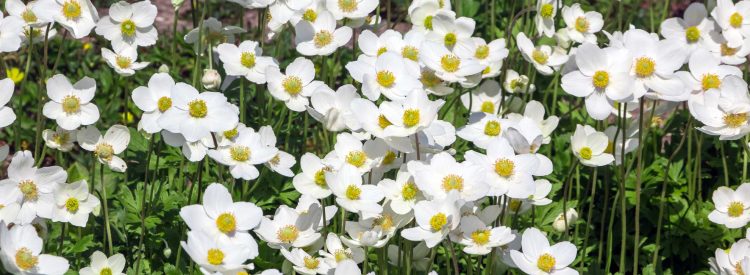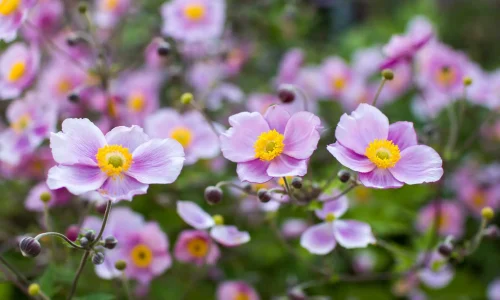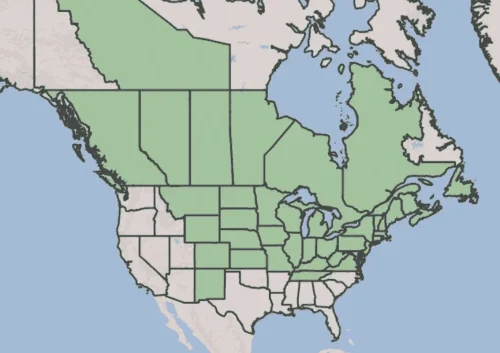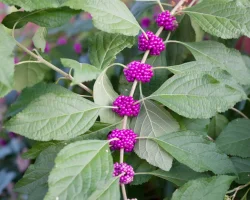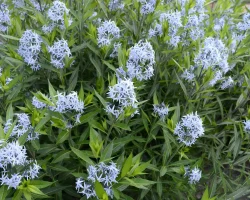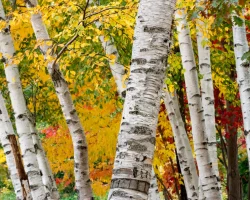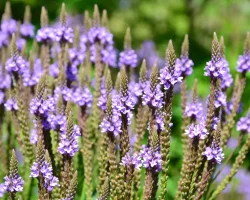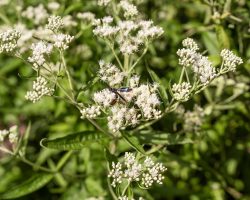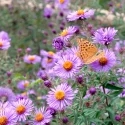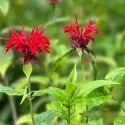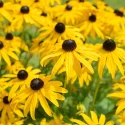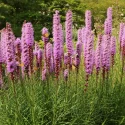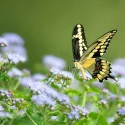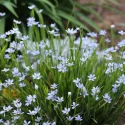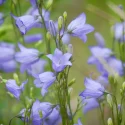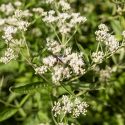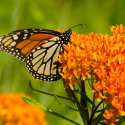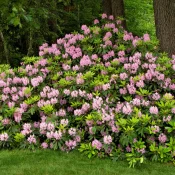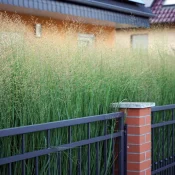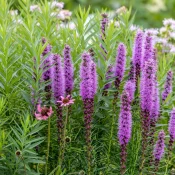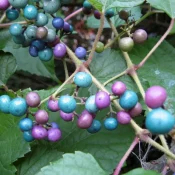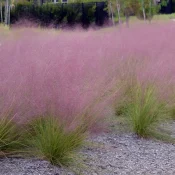This beautiful native flower offers a long bloom period, from late spring through summer. Its delicate, five-petaled white flowers on slender stems might remind you of strawberry plants. After flowering, Canada anemone’s lush green foliage remains vibrant for months. These plants spread quickly in rich soil, making them challenging for smaller gardens. While they don’t produce nectar, they provide plenty of pollen, attracting pollinators. Scroll on for tips on how to plant and where to source this native flower.
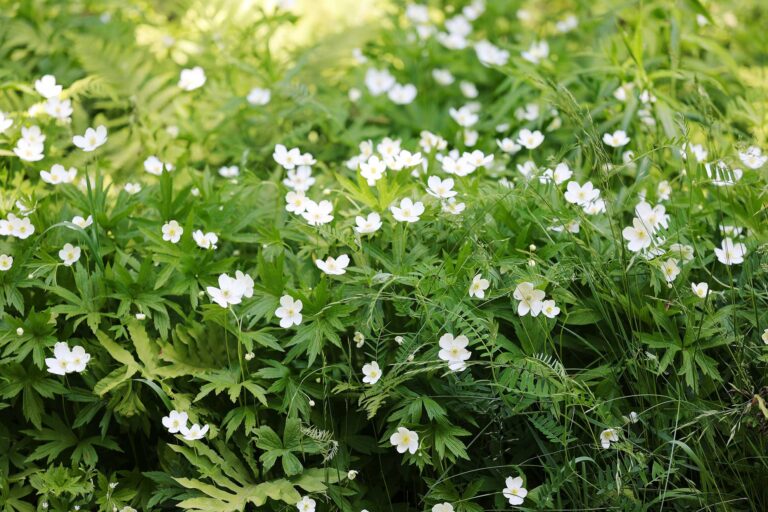
Why Canada anemone matters
Canada anemone has been growing in North America for thousands of years—it knows exactly what it’s doing when planted in its home area. Native plants like this one bring effortless beauty, resilience, and wildlife support to our gardens.
Why plant Canada anemone:
- Fuss-free gardening. Once established, it thrives on rain alone—no fertilizer or constant watering required.
- Beauty + wildlife support. Pollinators evolved alongside this plant and rely on its early summer blooms for nectar and pollen.
- Beginner-friendly. Happy in full to part sun and tolerant of everything from sandy to loamy to lightly clay soils, it’s an easy native for almost any yard.
New to native?
Before lawns and landscaping, native plants were here. They’ve fed birds, bees, and butterflies for thousands of years—and they’ll do the same in your yard. The best part? They’re easier to grow than you think.
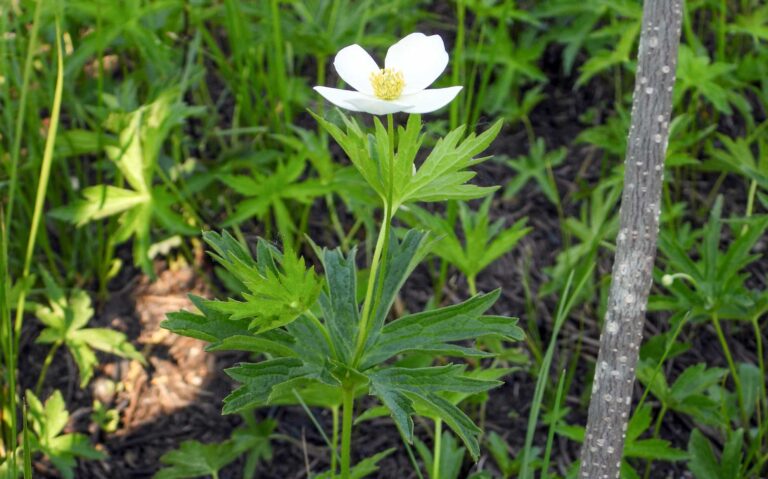
Canada anemones are pollinator favorites
Some flowers provide both pollen and nectar, and some flowers provide just pollen. Canada anemone is one of the latter. Its bloom time in May/June is crucial for pollinators as they emerge from their nests and start to reproduce.
Are anemones native to North America?
About 10-12 anemone species are native to North America, including Anemone Canadensis, profiled here. Other North American native anemones include A. quinquefolia (Wood Anemone) and A. Patens (Pasqueflower or Prairie Crocus).
Worldwide, there are around 200 species of anemone. If you’re looking at an anemone blooming in the fall, it’s probably one of the Asian anemones.
Non-native anemones = fall blooming
Some anemones and cultivars are native to Asia. Here is their difference at a glance:
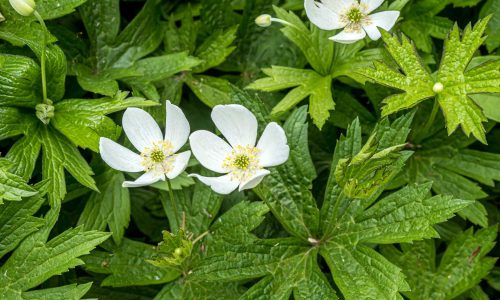
Canada anemone
Anemone canadensis
Five-petaled white flowers emerge in the late spring into early summer. Each stalk has only one flower. Sometimes also called Round-leaf Thimbleweed or Meadow Anemone. Native to North America—plant away, native plant lovers!
Japanese anemones
Anemone hupehensis
Asian anemones bloom in the fall and often have multiple flowers on a single stalk. Species include A. hupehensis and quite a few hybrid cultivars. The Chicago Botanic Garden has a very thorough fall-blooming anemone overview.
FAQs
Is Canada anemone aggressive?
If you’ve never heard the term “aggressive” applied to a plant before, you imagine tiny green boxing gloves or shouting flowers. In gardening, the term “aggressive” is used to identify plants that are very good at spreading when grown in a favorable environment.
Canada anemone has an “aggressive” reputation in part because it spreads by rhizomes (roots) and seeds.
It especially spreads quickly when planted in its favored area: one with rich, humus-rich soil. (Humus is soil that is rich with decomposing leaves and/or organic matter.) Its rhizome roots spread out to expand, sending shoots and new plants upward.
Aggressive plants are not always “bad”
Plants that quickly spread sometimes get a bad reputation, but it’s more complicated than that. If you have a large area, “aggressive” plants like Canada anemone, bee balms, blue mistflower, and obedient plant can quickly cover a vast expanse. On the other hand, if you have a small garden, aggressive plants can push out other less aggressive plants to make room for themselves. Aggressive plants can also sometimes spread to other locations in the garden through their rhizome roots or by seed dispersal.
To keep Canada anemone in check:
- Dig up and divide clumps of flowers (make sure you get its rhizome roots!) in the fall. Plant these clumps elsewhere in your garden or give them away to friends and neighbors. Normally, this division is done after the second or third year and, as needed after that.
- Cut off flowers after bloom to prevent seeds from forming and spreading.
A plant that clones itself—but still dates around
Even though Canada anenomes can carpet entire areas by cloning itself underground through rhizomes, it still plays the long game when it comes to pollination. Each flower holds off on fertilization for several days, letting pollen from many visitors compete in a tiny pollen Olympics. And despite being a pro at self-duplication, it refuses to self-pollinate—meaning they’ll only set seed when pollen comes from another, genetically different plant—relying on insects to keep their genetics fresh and their colonies strong.
Where is Canada anemone native?
Don’t be fooled by the common name inclusion of ‘Canada’—Canada anemones are found throughout most of North America. 60% of Americans and most Canadians can happily plant this flower.
Where can I find Canada anemone for my garden?
We’re not going to lie: finding native plants is not as easy as it should be. To make finding this plant easier, here are four sourcing ideas:
Where can I find seeds and plants?
Finding native plants can be challenging (we partly blame Marie Antoinette.) To make it easier, we’ve assembled four sourcing ideas.
300+ native nurseries make finding one a breeze
Explore 100+ native-friendly eCommerce sites
Every state and province has a native plant society; find yours
Online Communities
Local Facebook groups are a great plant source
What are good pairings for Canada anemone?
Canada anemones are great paired with other natives that like sunshine, soil, and a normally moist environment. Some great pairings include:
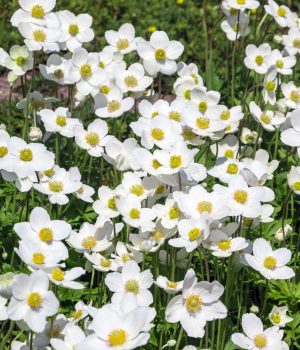
Pairs well with
And that concludes our love letter to Canada anemone! These native flowers bloom in the late spring and early summer, offering lots of pollen for early pollinators. They can quickly spread in areas with humus-rich soil, making them great for larger expanses but challenging for smaller gardens. They thrive in full sun to part sun, making them great for beginner gardeners. Check out our Beginner’s Guide to Native Plants for Butterflies or our Beginner’s Guide to Native Mountain Mint for other pollinator favorites. Happy planting!
Sources
- Douglas, Kelly Lea, and Robert William Cruden. “The Reproductive Biology of Anemone Canadensis (Ranunculaceae): Breeding System and Facilitation of Sexual Selection.” American Journal of Botany 81, no. 3 (March 1994): 314–21. https://doi.org/10.1002/j.1537-2197.1994.tb15449.x.
- Holm, Heather, “Pollinators of Native Plants.” Pollination Press (2014). 178-181.
- Molano‐Flores, Brenda, and Stephen D Hendrix. “The Effects of Population Size and Density on the Reproductive Output of Anemone Canadensis L. (Ranunculaceae).” International Journal of Plant Sciences 160, no. 4 (July 1, 1999): 759–66. https://doi.org/10.1086/314161.
- Parker, Rosemary. Finger Lakes Native Plant Society, “This Ugly Duckling is Not a Swan: Anemone spp.” (October, 2009).
- Rudy, Mark R., Jenny Lee, and Chicago Botanic Garden. “Fall-blooming Anemones.” Plant Evaluation Notes, 2004. (PDF).
- Royal Botanic Gardens, Kew. Plants of the World Online. “Anemone L. |Kew Science.”
- The Prairie Promoter, Volume 36, Number 2, Summer 2023. (PDF).
- Native Plant Trust, “Anemone Virginiana (Tall Anemone, Tall Windflower): Go Botany.”
- New Moon Nursery, Anemone Virginiana.
- USDA Plants Database, Canada Anemone.
- Ladybird Johnson Wildflower Center, Anemone Canadensis (Canadian Anemone) | Native Plants of North America.
What if your feed was actually good for your mental health?
Give your algorithm a breath of fresh air and follow us.
